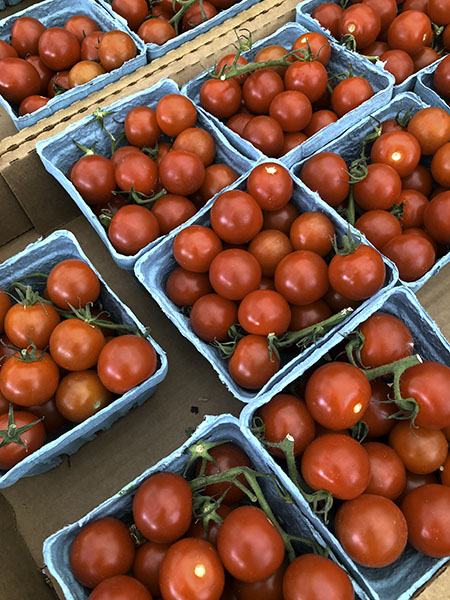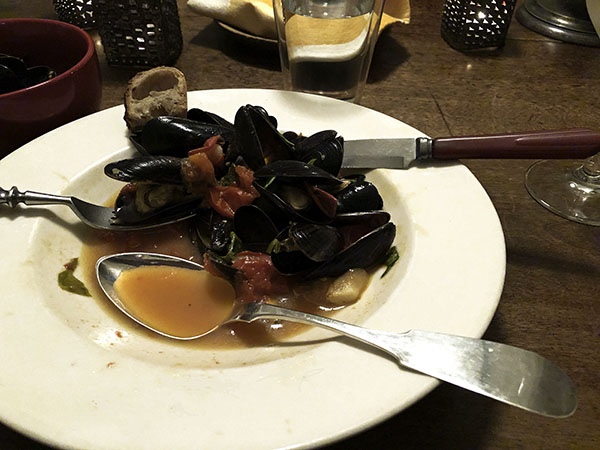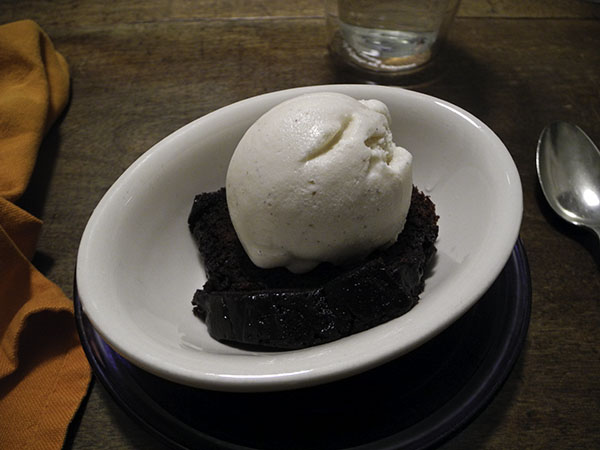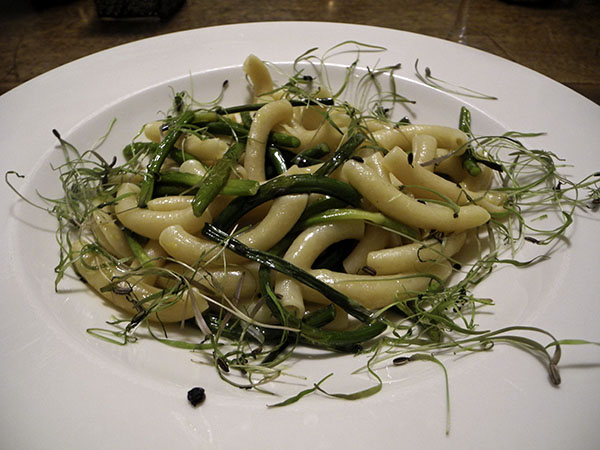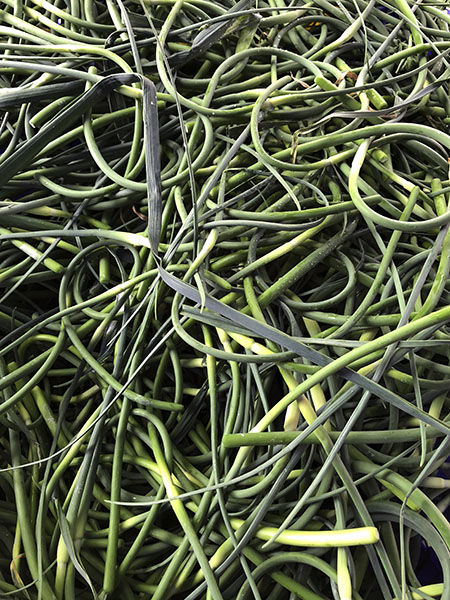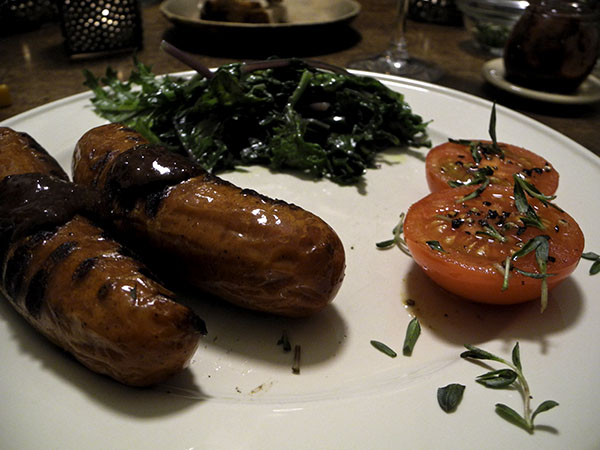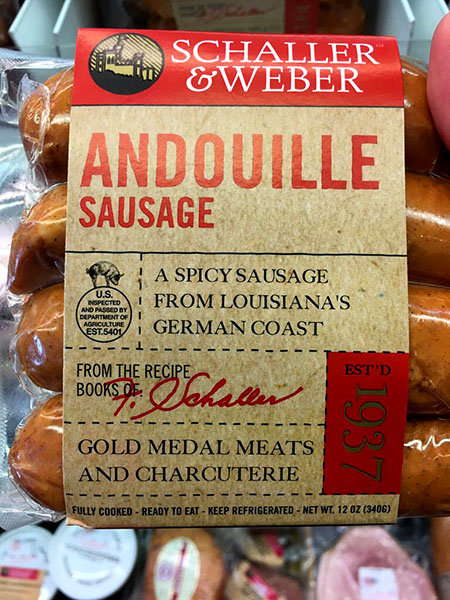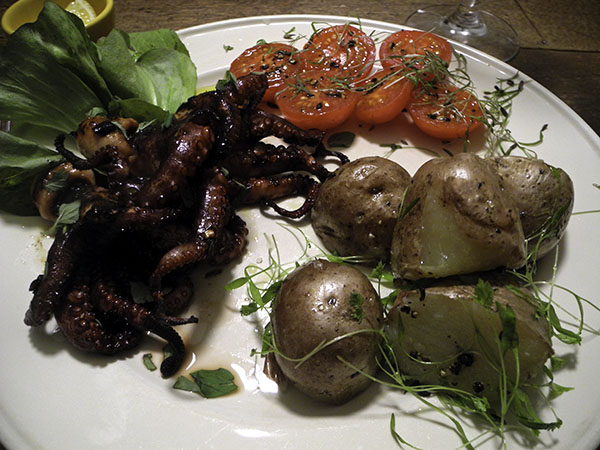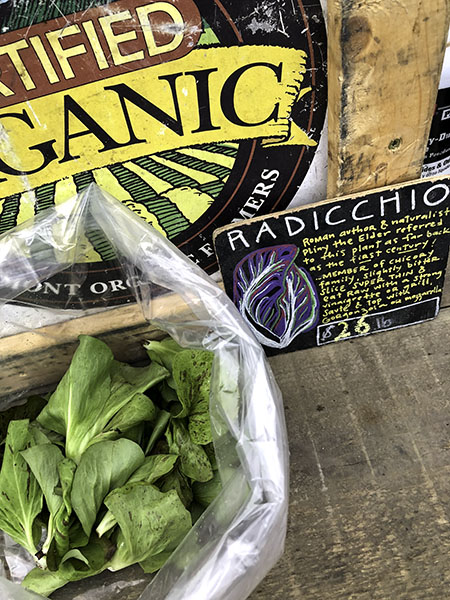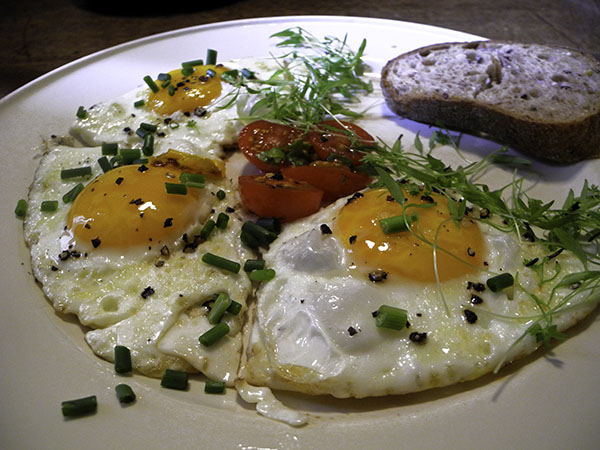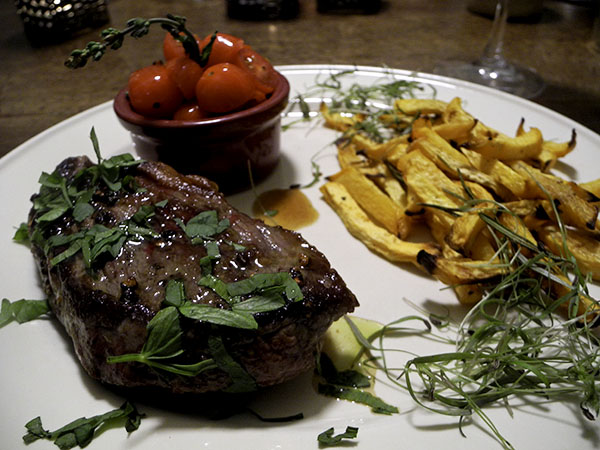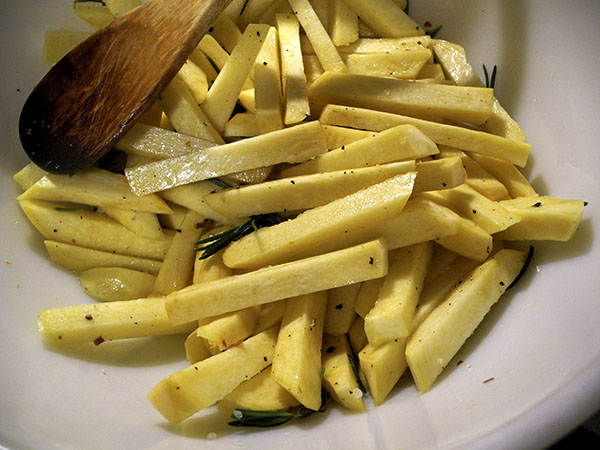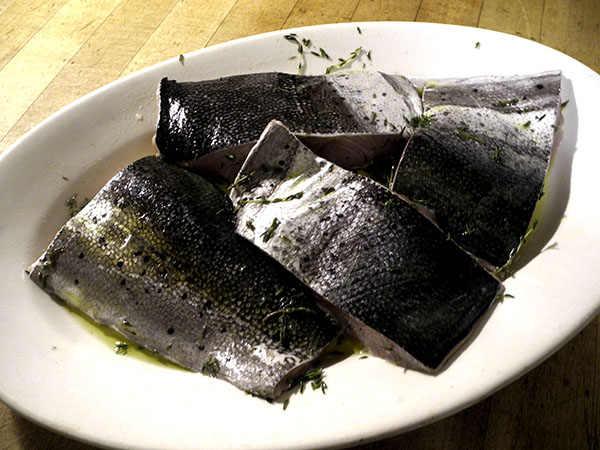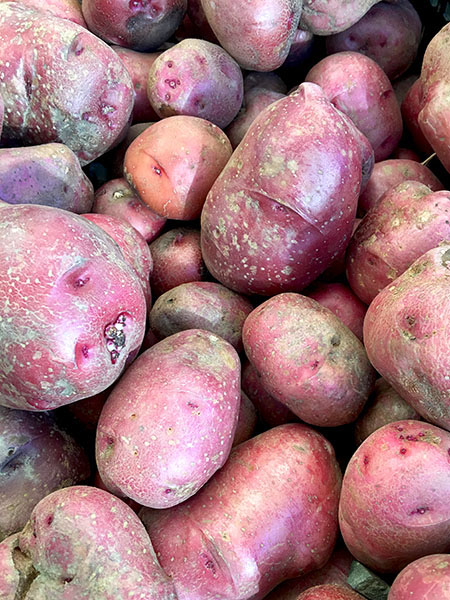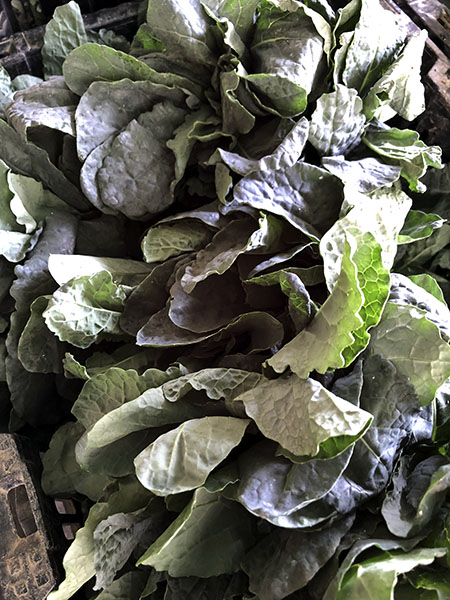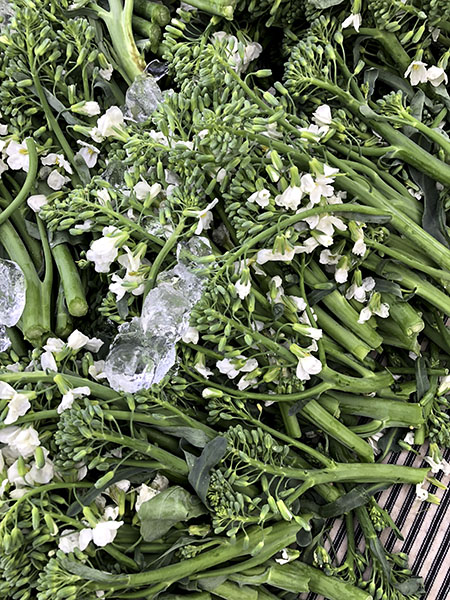
It was the 3rd of June; it wasn’t supposed to be a day for a wintry meal, but as I considered my stocks, and the cold outside temperature, my original conception of it gradually evolved into something looking and feeling like something more appropriate for a cooler month.
- one 14-ounce duck breast from Hudson River Duck Farm, the fatty side scored in tight cross hatching with a very sharp knife, the entire breast then rubbed, top and bottom, with a mixture of sea salt, freshly-ground black pepper, and a little turbinado sugar, then left standing, first inside the refrigerator and later on the counter for about an hour altogether before it was pan-fried, fatty side down first, inside a small oval enameled cast iron pan over medium heat for a total of about 9 minutes, turning once, draining the oil after the first few minutes (the fat to be strained and used in cooking at another time, if desired), removed when medium rare, cutting crosswise into 2 portions and checking that the center was of the right doneness, which means definitely no more than medium rare, and maybe even a bit less, left to sit for several minutes before it was finished with a drizzle of juice of an organic lemon from Whole Foods Market, and a little Spanish (Seville) house olive oil from Whole Foods Market, finished on the plates garnished with micro mustard greens from Windfall Farms
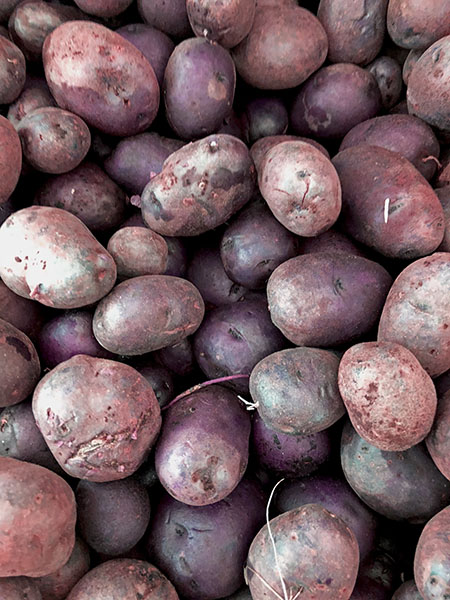
- a pound of so of medium-size Peter Wilcox potatoes (purple skin, golden flesh) from Tamarack Hollow Farm, scrubbed, their skins left on, cut into wedges, tossed with a little olive oil, sea salt, freshly-ground black pepper, rosemary leaves from Stokes Farm, and a bit of crumbled dry golden/orange habanada pepper, the potatoes arranged, cut side down, on a medium Pampered Chef unglazed ceramic pan, roasted at 400º for about 35 minutes, garnished with chopped summer savory from Stokes Farm
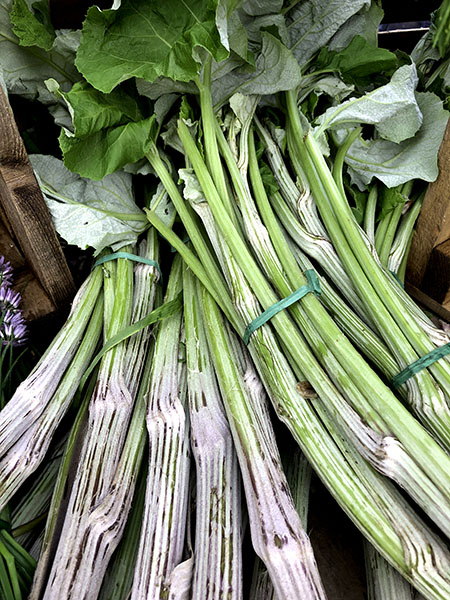
- two bundles of spring seed stalk burdock (or wild cardoon, but think ‘artichoke’ for the flavor!) from Gorzynski ‘Ornery’ Farm, the tops, with the leaves, removed, the stems washed, the bitter outer stringy layer pulled back from the center and torn off, using a thumb, until what remained was only the creamy pale-to-medium green interior, each stem cut into 2-inch segments as it was completed, and those pieces dropped into a bowl of water in which a heavy squeeze of lemon had been added (to keep the burdock from oxidizing and turning brown), removed from the bowl when all the stalks had been cleaned and cut, dried on a kitchen towel, tossed into a dry bowl with a little olive oil, sea salt, and freshly-ground black pepper, arranged on a large Pampered Chef unglazed ceramic pan, roasted on another shelf of the same 400º oven for about 30 minutes, then tossed while still in the pan with roughly-chopped Common mint from S. & S.O. Produce [I was already heating the oven for the potatoes, but I could also have just sautéed the cardoon inside a pan on top of the range, maybe in brown butter, finishing with a squeeze of lemon juice]
- the wine was an Austrian (Carinthia) red, Markowitsch Blaufränkisch 2016, from Astor Wines

- the music was Janice Giteck’s album, ‘Home (revisited)’ (I bought the CD at Tower Records in 1992, basically because I loved the cover, and because it was in the New Music section; at the time I had never heard of the composer, I didn’t know that the image was by Eggleston, and I didn’t know she had dedicated the pieces to people living with AIDS)


